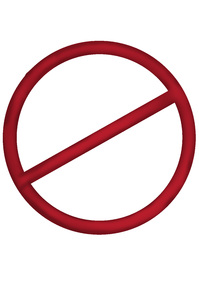
We can achieve this by implementing our own _ne_() function. When we are using the not-equal operator, we just want to compare it for record value. Computers display the equals sign with the Unicode or ASCII character 003D (in hexadecimal ). The equals sign is placed between the things stated to be exactly equal or the same. It looks like two parallel horizontal lines. ne then hit Spacebar neq then hit Spacebar If that does not work for you, make sure you used a backslash () and not a forward slash (/) 3. The equal sign, equals sign, or ' ' is a mathematical symbol used to indicate equality. Let’s say we have Data class with fields – id and record. Type ne or neq for Does Not Equal () With that option turned on in Word, you can now type the following to insert the does not equal sign. I would use the notation 0.0588 '' only if that last explicit digit is 8 and not if it's rounded upward to 8, whereas I would use 0.0588 '' if it's rounded either upward or downward. One can write 1 17 0.0588, meaning there are further digits after the 8. So we can define our custom implementation for an object and alter the natural output. Answer from comments: Usually one writes 1 17 0.0588. When we use not equal operator, it calls _ne_(self, other) function. You can also use ! with = to make != or "not equal".We can use Python not equal operator with f-strings too if you are using Python 3.6 or higher version. That will print out true, true, false – with the last value there because it flipped the previous true. This makes your statement mean the opposite of what it did. There's one more operator I want to introduce you to, and it's called the "not" operator: !. If you use = to compare two strings, you need to make sure they have the same letter case. Now, one thing that might catch you out is that in Swift strings are case-sensitive, which means "Tim McGraw", "TIM MCGRAW" and "TiM mCgRaW" are all considered different. That will show "true" in the results pane. So, Swift has an alternative in the form of =, meaning "is equal to." For example: var name = "Tim McGraw" If you want to check for equality, you can't use = because it already has a meaning: it's used to give a variable a value.

In the results window you'll see true, true, false, true – these are Booleans, because the answer to each of these statements can only ever be true or false. For example: var a = 1.1Ĭ ), greater than or equal ( >=), and less than ( <). Explore the Does Not Precede or Equal symbol meaning, learn the. Does Not Precede or Equal symbol character have a unique symbol name and meaning. Swift has a set of operators that perform comparisons on values. What does the Does Not Precede or Equal symbol mean Does Not Precede or Equal symbol consist of official symbol character, symbol name and meaning, and listed according to the Unicode standard. Note: If you bought Hacking with Swift and are using the exclusive guide book accompaniment to the course, you’ll find the modulus operator useful later on. It means “divide the left hand number evenly by the right, and return the remainder.” So, 9 % 3 returns 0 because 3 divides evenly into 9, whereas 10 % 3 returns 1, because 10 divides by 3 three times, with remainder 1. One more common operator you’ll see is called modulus, and is written using a percent symbol: %. That will write "Tim McGraw and Romeo" into the results pane. When it comes to strings, + will join them together.

As you might imagine, you can add two doubles together like this: var a = 1.1 The equals sign (British English, Unicode) or equal sign (American English), formerly known as the equality sign, is the mathematical symbol, which is. Some of these operators apply to other data types.

Symbol for does not equal free use code#
So, that code will show 10, 20, 10 in the results pane. += is an operator that means "add then assign to." In our case it means "take the current value of b, add 10 to it, then put the result back into b." As you might imagine, -= does the same but subtracts rather than adds. In the results pane, you'll see 10, 11, 10 and 100 respectively. Let's try a few basics – please type this into your playground: var a = 10 They all exist in Swift, along with a few extras. Operators are those little symbols you learned in your very first math classes: + to add, - to subtract, * to multiply, / to divide, = to assign value, and so on.


 0 kommentar(er)
0 kommentar(er)
